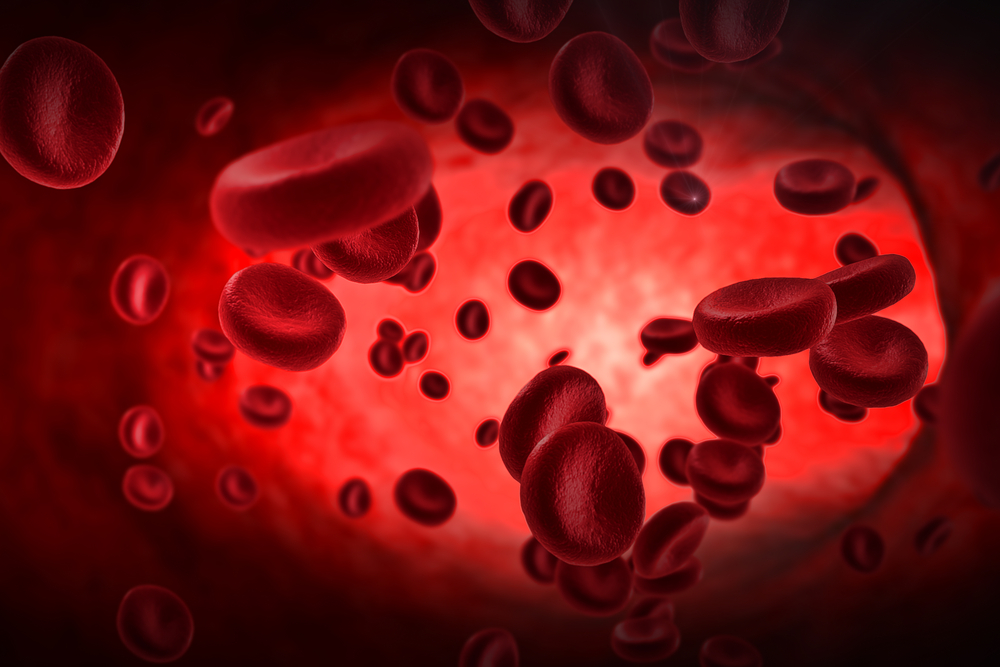Study Links Specific Genetic Changes to Development of Factor IX Inhibitors in Children With Severe Hemophilia B

Specific genetic changes may account for a larger proportion than previously thought of children with severe hemophilia B who develop inhibitors against coagulation factor IX replacement therapy, according to an international study.
The study, “Inhibitor Incidence In An Unselected Cohort Of Previously Untreated Patients With Severe Haemophilia B: A PedNet Study,” was published in the journal Haematologica.
Hemophilia B is caused by mutations in the F9 gene, leading to a deficiency in the production of coagulation factor IX protein (factor IX). About 30%–40% of hemophilia B patients have a severe form of the disease (with 1% or less of factor IX activity).
Factor IX replacement therapy is standard for hemophilia B patients to supply them with the missing clotting factor. However, some patients — almost exclusively those with severe disease — develop inhibitors (an immune response) against the therapy which can severely block its effectiveness and lead to treatment resistance.
While some studies have reported the development of factor IX inhibitors in 1%–5% of hemophilia B patients, most were based on a small number of patients, including those with different severities, and without prospective follow-up.
Some evidence suggests that specific F9 mutations may contribute to the development of inhibitors, which is often associated with allergic reactions.
In the study, a team of researchers set out to evaluate the frequency of inhibitor development and allergic reactions in children with severe hemophilia B, as well as the effect of F9 mutations on the risk of developing inhibitors, using data from the PedNet registry.
The PedNet registry (NCT02979119) is an international database of children born from Jan. 1, 2000, to Jan. 1, 2020, with all types of hemophilia in 18 countries.
The researchers analyzed the demographic and clinical data of 154 untreated children with severe hemophilia B for up to 500 days of primary prophylaxis (preventive replacement treatment at an early age, before symptom onset).
During the first 50 days of treatment, and then annually, detailed data was collected about the presence of inhibitors (at least two consecutive blood samples positive for inhibitors) and allergic reactions.
Most children (80%) were Caucasian, and about half of them had a history of hemophilia in the family. The children started preventive treatment at a median age of 9.6 months, and 77% of them were followed until 50 days of treatment, 75% until 75 days, 68% until 150 days, and 43% until 500 days of treatment.
Results showed that 14 children (9%) developed factor IX inhibitors during the study, at a median of 11 days of treatment and when they were nearly 2 (23.2 months). Seven of them showed considerably high levels of inhibitors.
The cumulative frequency of inhibitor development at 75 days of treatment was 9.3% for all levels of inhibitors and 5% for high levels of inhibitors. At 500 days of treatment, the frequency of inhibitor development was 10.2%.
A positive family history for factor IX inhibitors was significantly more frequent (21%) among children positive for inhibitors than among those who did not develop inhibitors.
Analysis of available genetic data from 124 children (80.5%) showed that the most frequent mutations were missense mutations (46.8%). Missense mutations lead to a switch of an amino acid — the building block of proteins — in the resulting protein.
However, these mutations were not associated with the development of inhibitors; for the 14 inhibitor-positive children, seven carried only nonsense mutations (50%), and five had large genetic deletions (35.7%). Nonsense mutations result in a premature stop in protein production, leading to a shorter and likely nonfunctional protein. Two children had no known genotype.
The data showed that the risk of developing inhibitors was increased by 26.9% in children carrying nonsense F9 mutations and by 33.3% in those carrying large F9 deletions.
These findings “confirm previous reports suggesting a strong association between absent endogenous [factor IX] protein due to gross and complete gene deletions and inhibitor development,” the researchers wrote.
Without the natural presence of factor IX protein, the body’s immune system may not learn to tolerate it as efficiently, and thus is more likely to react against it when it’s administered in replacement therapy, they said.
The team hypothesized that the high proportion of missense mutations (resulting in some levels of factor IX protein) in severe hemophilia B patients is behind the overall low frequency of inhibitor development, compared to that of hemophilia A patients (25%–35%).
In addition, allergic reactions associated with inhibitor development were reported in four children (28.6%), one of them having high levels of factor IX inhibitors. Two of them carried nonsense mutations, one had a large deletion, and one had an unknown mutation.
The researchers noted that their findings were consistent with most of the previously published data, but that larger studies are required to confirm these results and explore potential risk factors for inhibitor development in hemophilia B patients.






